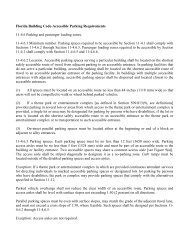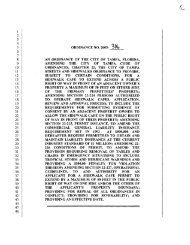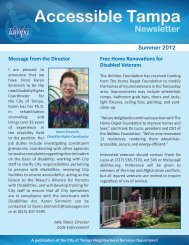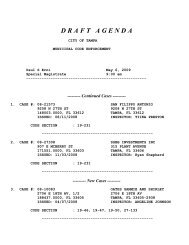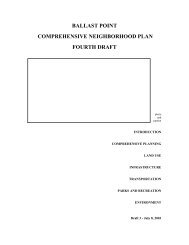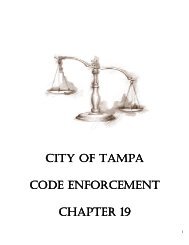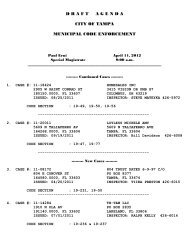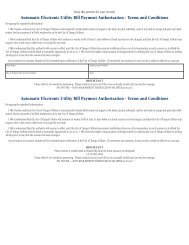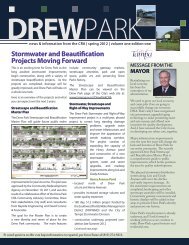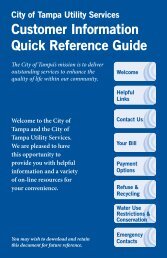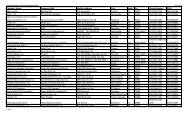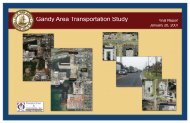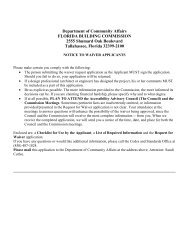Urban Design Guidelines - Valley Metro
Urban Design Guidelines - Valley Metro
Urban Design Guidelines - Valley Metro
Create successful ePaper yourself
Turn your PDF publications into a flip-book with our unique Google optimized e-Paper software.
HOW THESE GUIDELINES WILL BE USEDThese <strong>Design</strong> <strong>Guidelines</strong> will act as adocumentation of a community’s agreementbetween the agency, designers,design review boards, the rider whouses the system, and the neighborhoodsit passes through. It is intended that thevalues expressed in this documentaccurately reflect the values of the communityand the design process.Engineers, neighbors, architects, stakeholders,artists, jurisdictional bodies,and landscape architects are but a fewof the groups who will interpret thecontents.In an age of changing technology, wemust never lose sight of the physicalimpact of a twenty-mile light rail systemon the landscape of this <strong>Valley</strong><strong>Design</strong>ers should be encouraged to berespectful of what already exists, reachto the future for new solutions, but notbe so quick to embrace the new that elementsbecome immediately dated. Thedesign process should create a systemthat citizens and municipalities will beable to use for the next fifty years.Just as the designers of this system willneed to form a partnership with thedesign intent of this document, so mustthe agency form a partnership with thecommunity in the preservation of theexecuted designs. It would be a shamefor the designers to adhere to the guidelinesand then have the designed elementsbecome tired due to a relaxedapproach to maintenance. Non-transitriders are always quick to point to perceptionsabout lack of safety and cleanlinessas reasons why they do not use asystem. Trash removal, paint maintenance,ticket vending reliability, conservationof public artworks, and attentionto preservation of landscaping are just afew of the more visible arenas in whichthe agency must play an aggressiverole.To build a complex system in a complexenvironment is no easy task. This documentshall remain as a touchstone to:∆ Establish a commitment of excellencebetween the transit agencyand the communities.∆ Guide the design and review of allelements and be used as a performancechecklist by the agency.Budget ConstraintsThe priorities identified by the <strong>Urban</strong><strong>Design</strong> Task Force and the team will beused during the cost review process tohelp set the parameters for the light railsystem. If the project is unable to fundall of the steps identified in this document,the highest priority urban designelements will receive first consideration.<strong>Design</strong> ReviewAll design work (engineering, architecture,public art, landscaping, and urbanplanning) will be reviewed by a multidisciplinaryteam of managers withinthe light rail project.It will be anticipated that, unless otherwisestipulated, all designers’ work(engineering, architecture, landscapearchitecture, and art) within a stationarea or alignment segment will bereviewed within the same session. It iscritical that station areas and alignmentsegments be reviewed holistically ratherthan piecemeal. Upon reviewingdesigns, written directives will be submittedto the designer by the appropriateManager. Once approved orapproved with revisions and reviews,designs will then move forwardthrough neighborhood/stakeholderpresentations and jurisdictional artistand design review presentations.Companion DocumentsThese guidelines, along with the StationArea Planning Notebook and theEngineering <strong>Design</strong> Criteria, will directthe engineers, architects, landscapearchitects, and artists for the light railproject.Page 9



